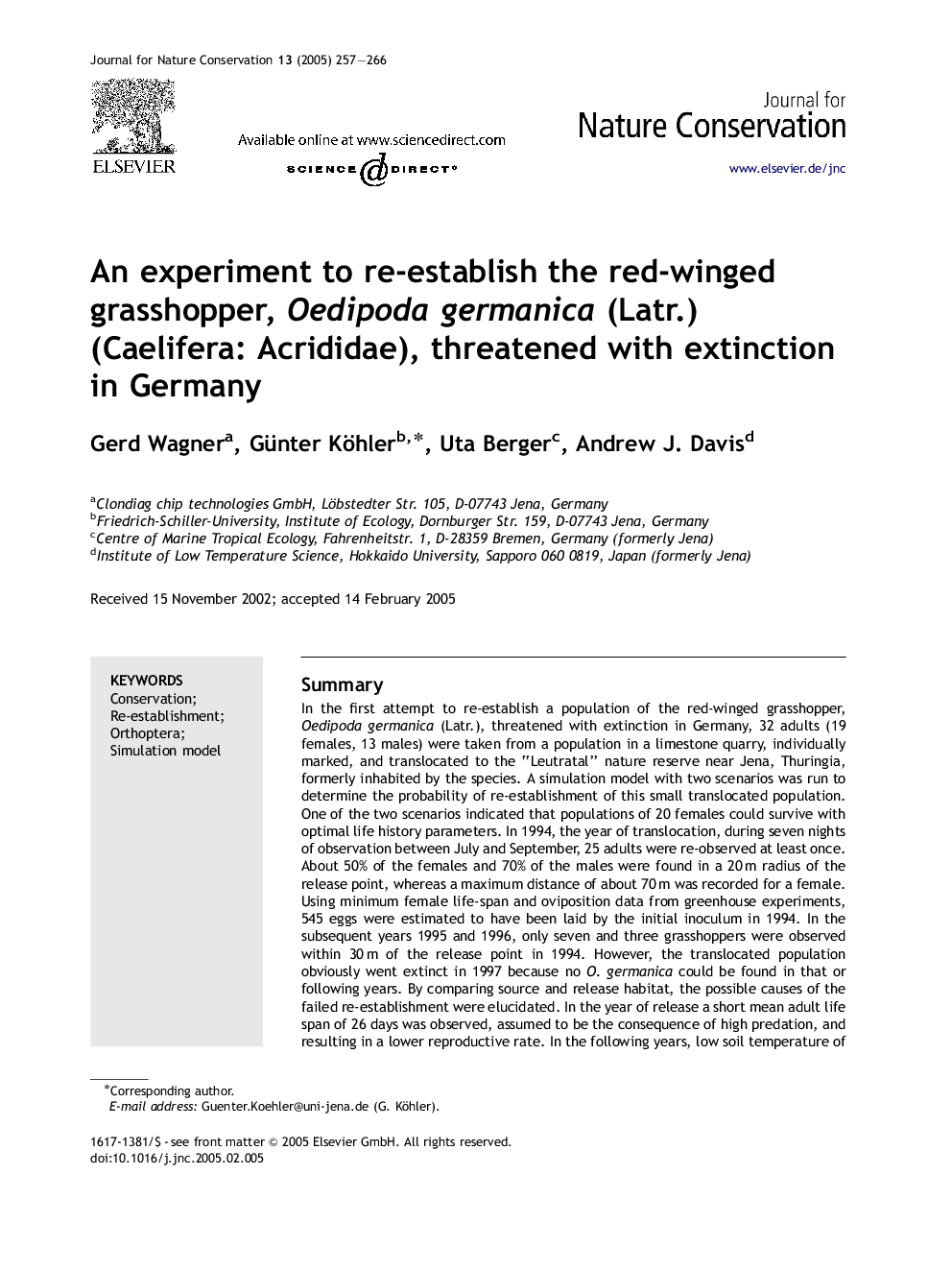| کد مقاله | کد نشریه | سال انتشار | مقاله انگلیسی | نسخه تمام متن |
|---|---|---|---|---|
| 9450475 | 1306924 | 2005 | 10 صفحه PDF | دانلود رایگان |
عنوان انگلیسی مقاله ISI
An experiment to re-establish the red-winged grasshopper, Oedipoda germanica (Latr.) (Caelifera: Acrididae), threatened with extinction in Germany
دانلود مقاله + سفارش ترجمه
دانلود مقاله ISI انگلیسی
رایگان برای ایرانیان
کلمات کلیدی
موضوعات مرتبط
مهندسی و علوم پایه
علوم زمین و سیارات
علوم زمین و سیاره ای (عمومی)
پیش نمایش صفحه اول مقاله

چکیده انگلیسی
In the first attempt to re-establish a population of the red-winged grasshopper, Oedipoda germanica (Latr.), threatened with extinction in Germany, 32 adults (19 females, 13 males) were taken from a population in a limestone quarry, individually marked, and translocated to the “Leutratal” nature reserve near Jena, Thuringia, formerly inhabited by the species. A simulation model with two scenarios was run to determine the probability of re-establishment of this small translocated population. One of the two scenarios indicated that populations of 20 females could survive with optimal life history parameters. In 1994, the year of translocation, during seven nights of observation between July and September, 25 adults were re-observed at least once. About 50% of the females and 70% of the males were found in a 20Â m radius of the release point, whereas a maximum distance of about 70Â m was recorded for a female. Using minimum female life-span and oviposition data from greenhouse experiments, 545 eggs were estimated to have been laid by the initial inoculum in 1994. In the subsequent years 1995 and 1996, only seven and three grasshoppers were observed within 30Â m of the release point in 1994. However, the translocated population obviously went extinct in 1997 because no O. germanica could be found in that or following years. By comparing source and release habitat, the possible causes of the failed re-establishment were elucidated. In the year of release a short mean adult life span of 26 days was observed, assumed to be the consequence of high predation, and resulting in a lower reproductive rate. In the following years, low soil temperature of the release habitat probably delayed egg hatching for about 1 week, delaying phenology and thereby reducing the period over which eggs could be laid. A rapid population decline resulted in only three females found in the year before extinction.
ناشر
Database: Elsevier - ScienceDirect (ساینس دایرکت)
Journal: Journal for Nature Conservation - Volume 13, Issue 4, 6 December 2005, Pages 257-266
Journal: Journal for Nature Conservation - Volume 13, Issue 4, 6 December 2005, Pages 257-266
نویسندگان
Gerd Wagner, Günter Köhler, Uta Berger, Andrew J. Davis,